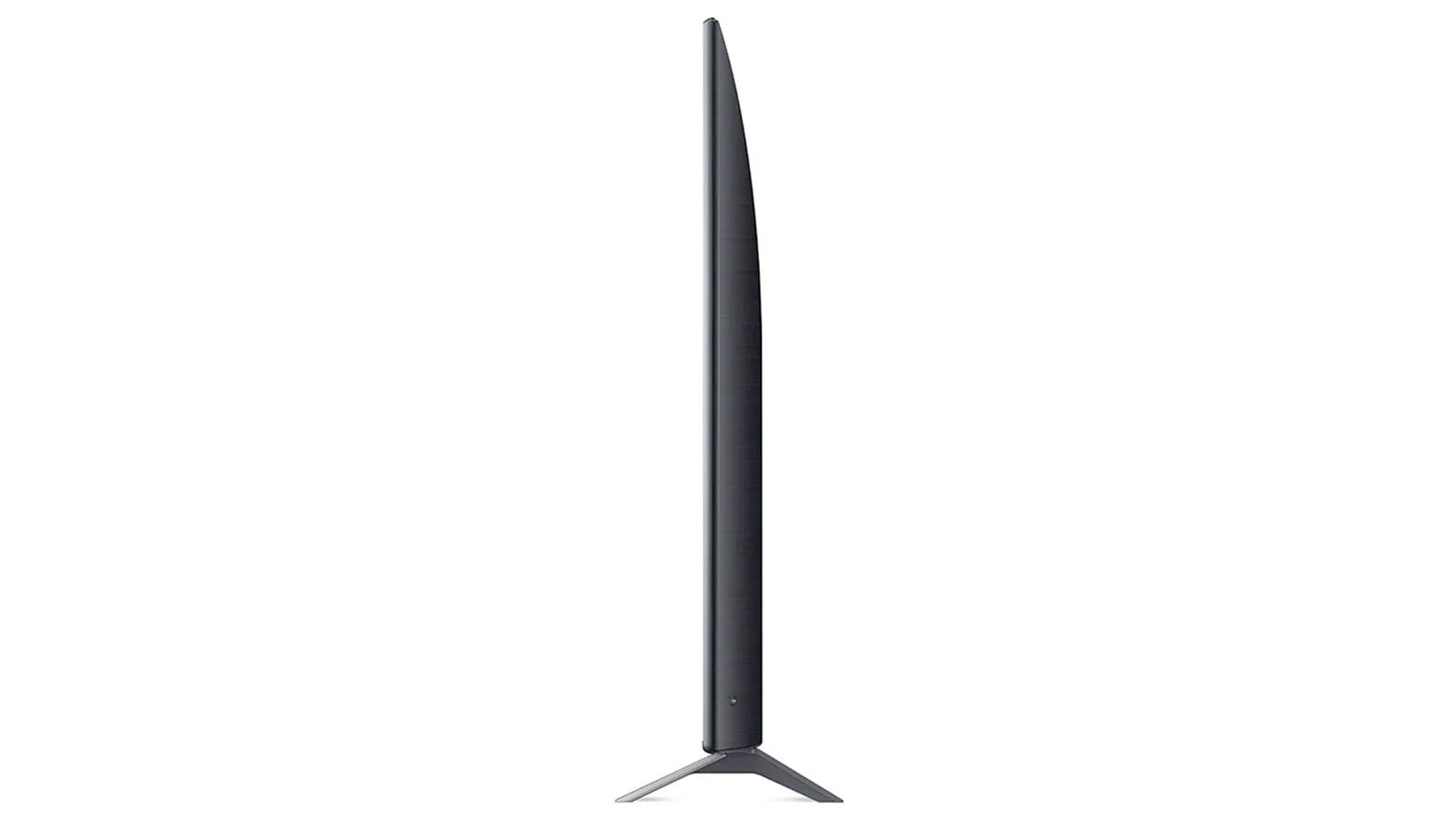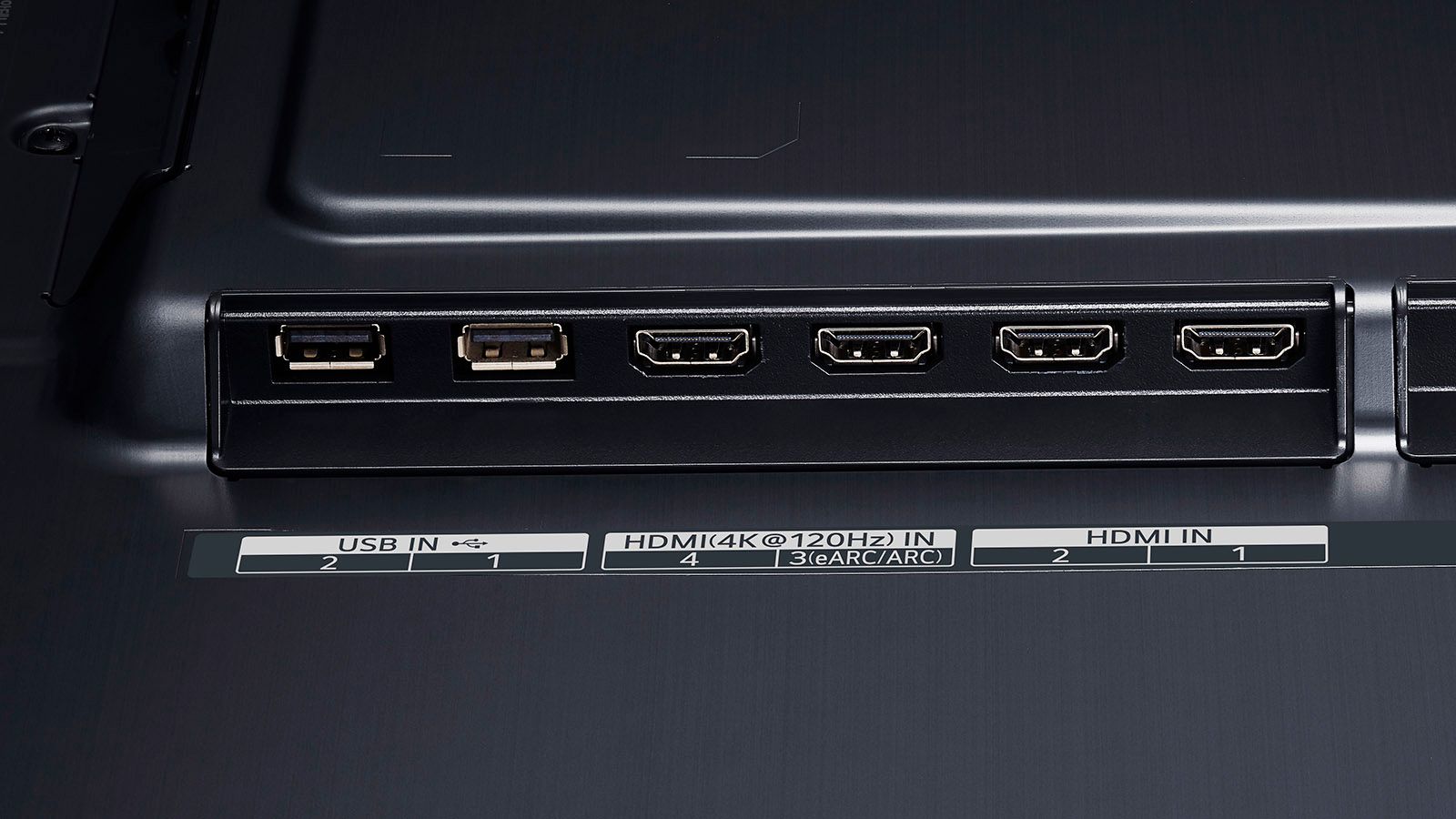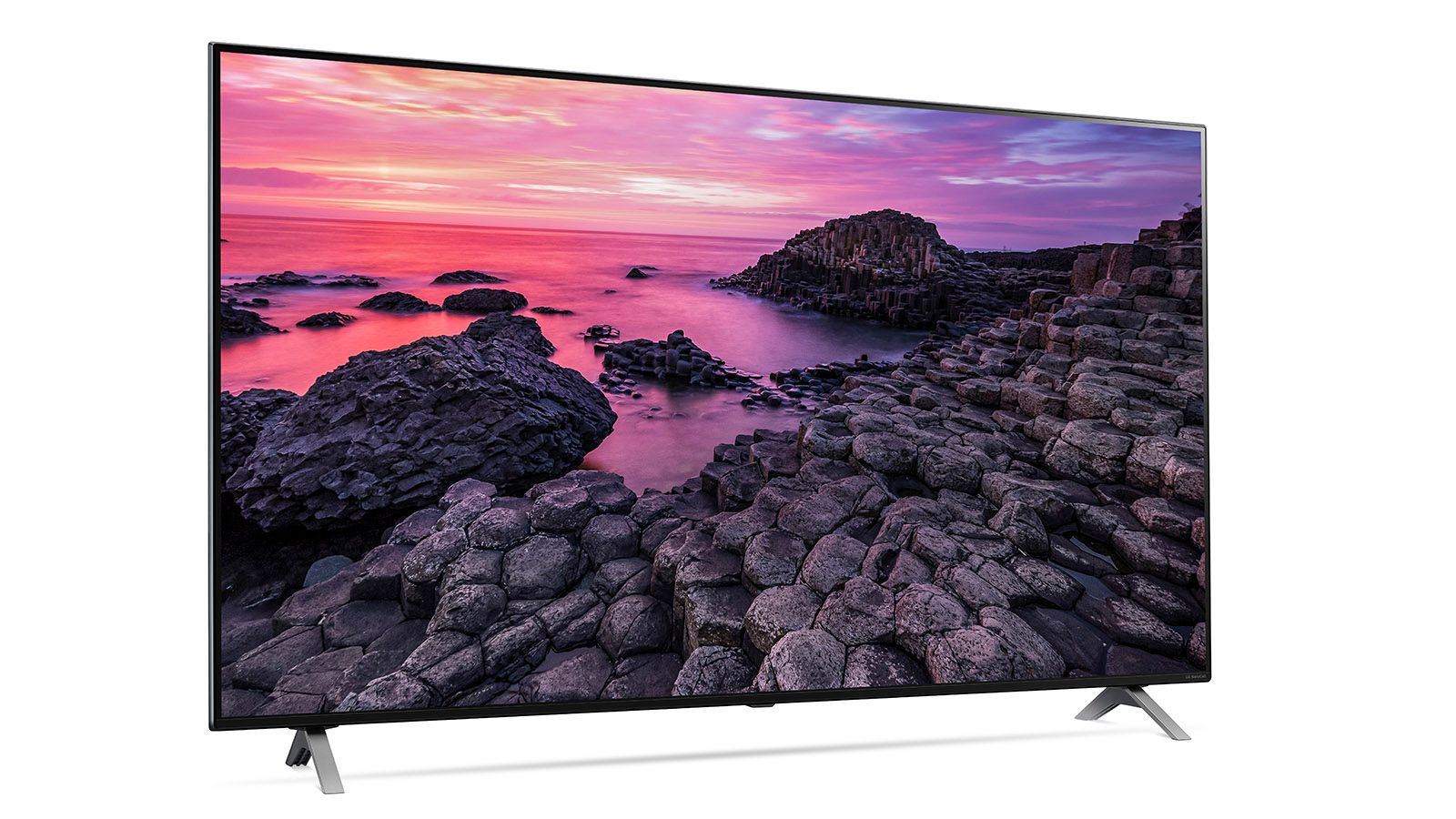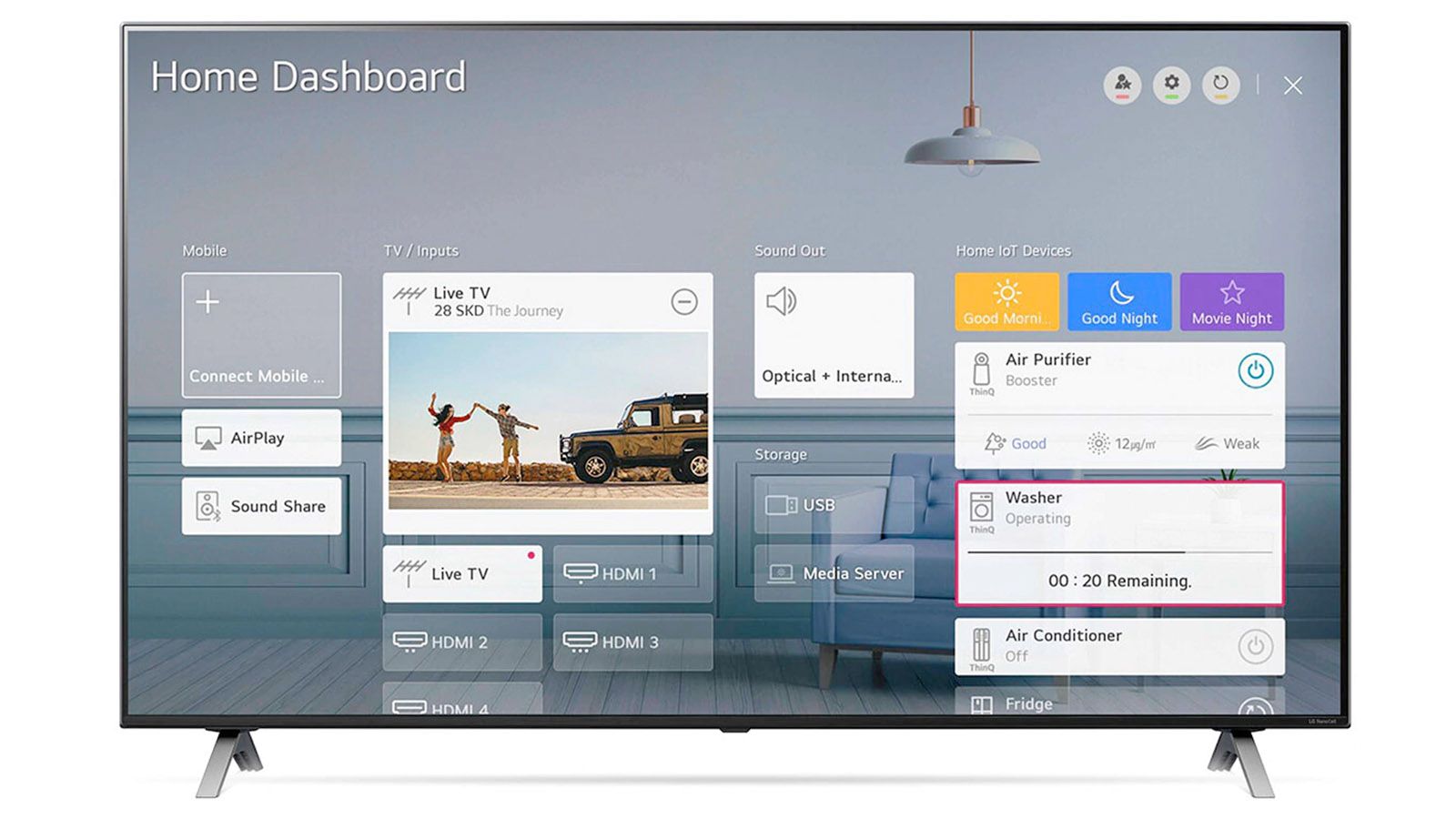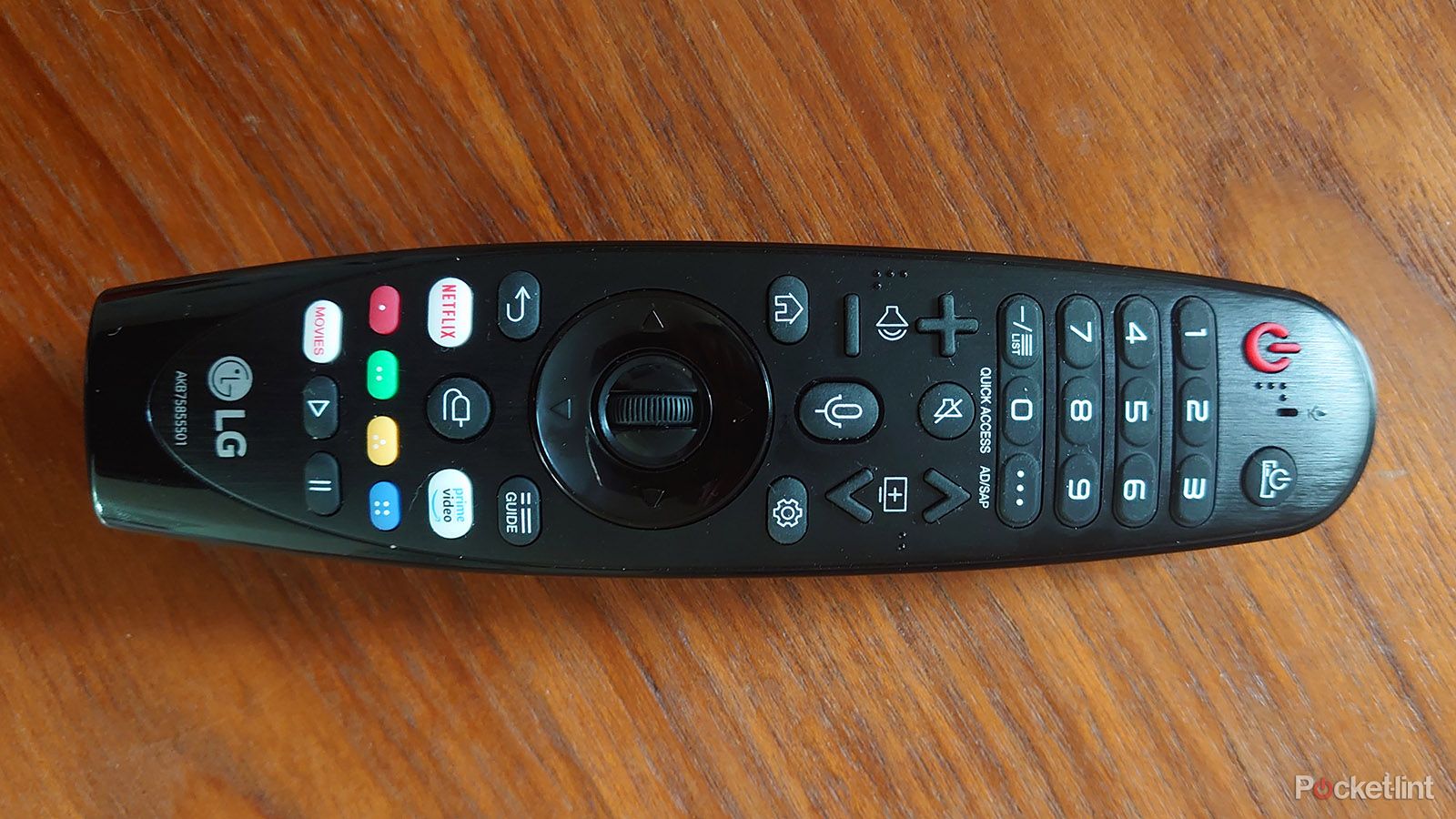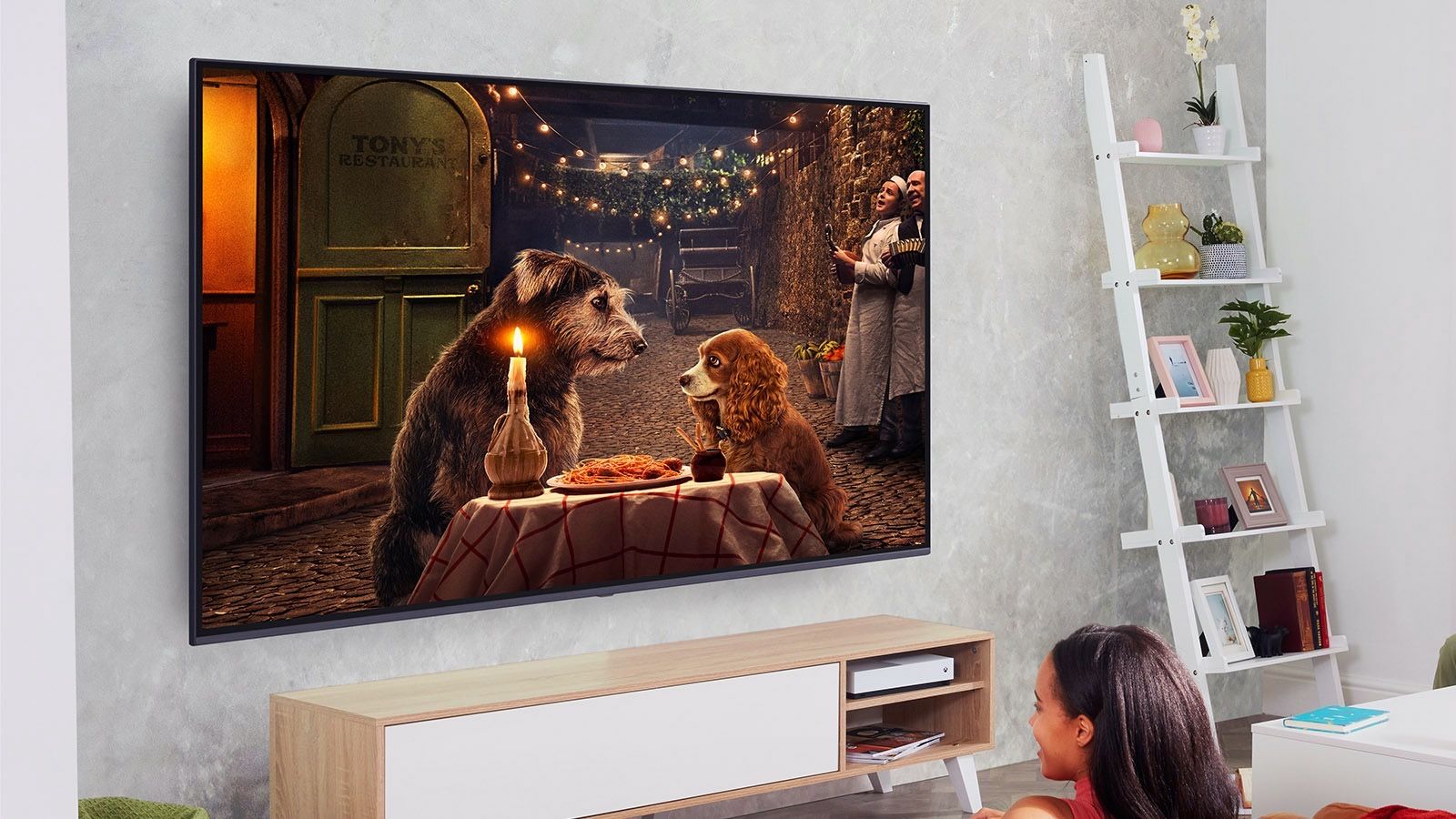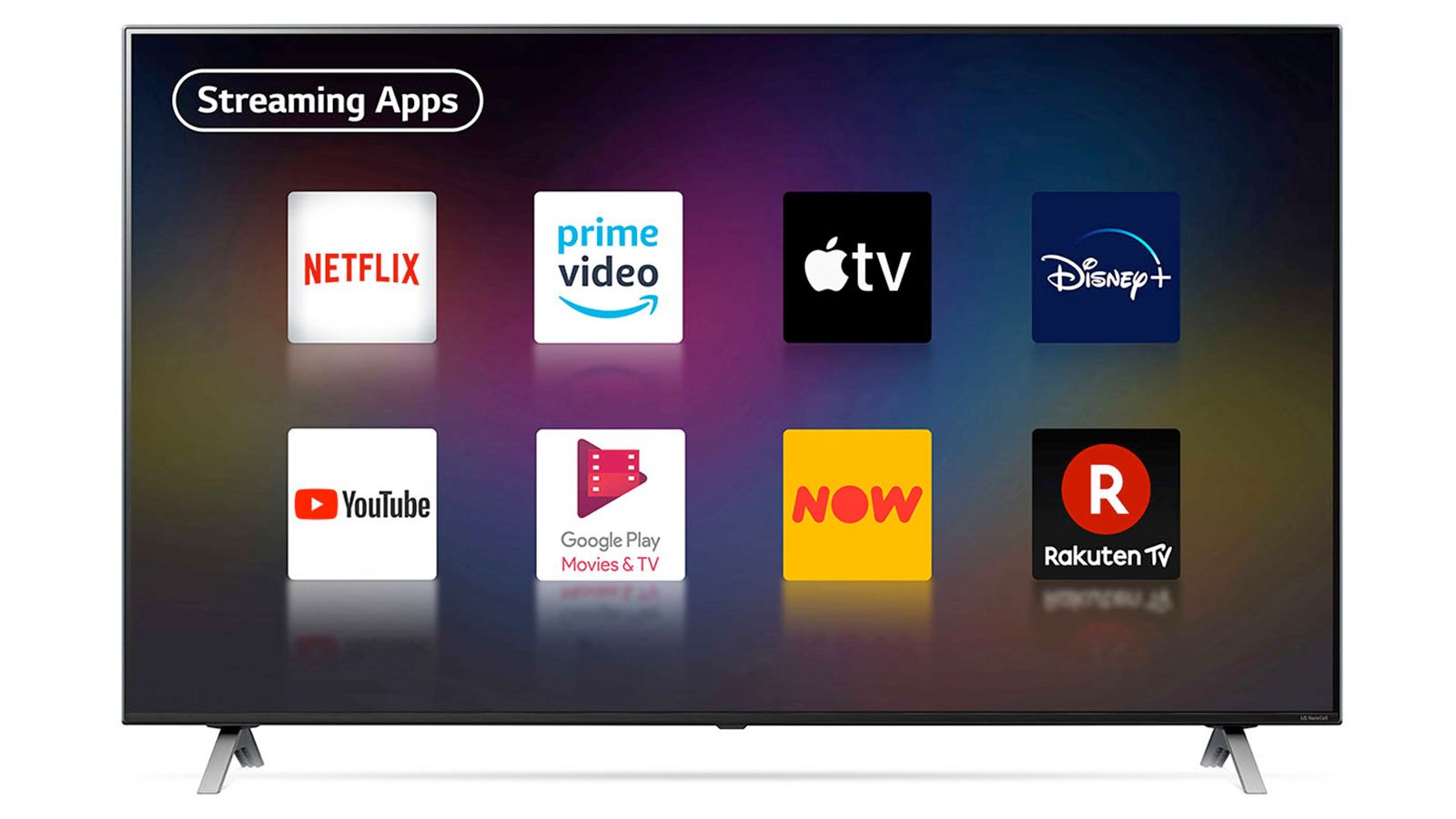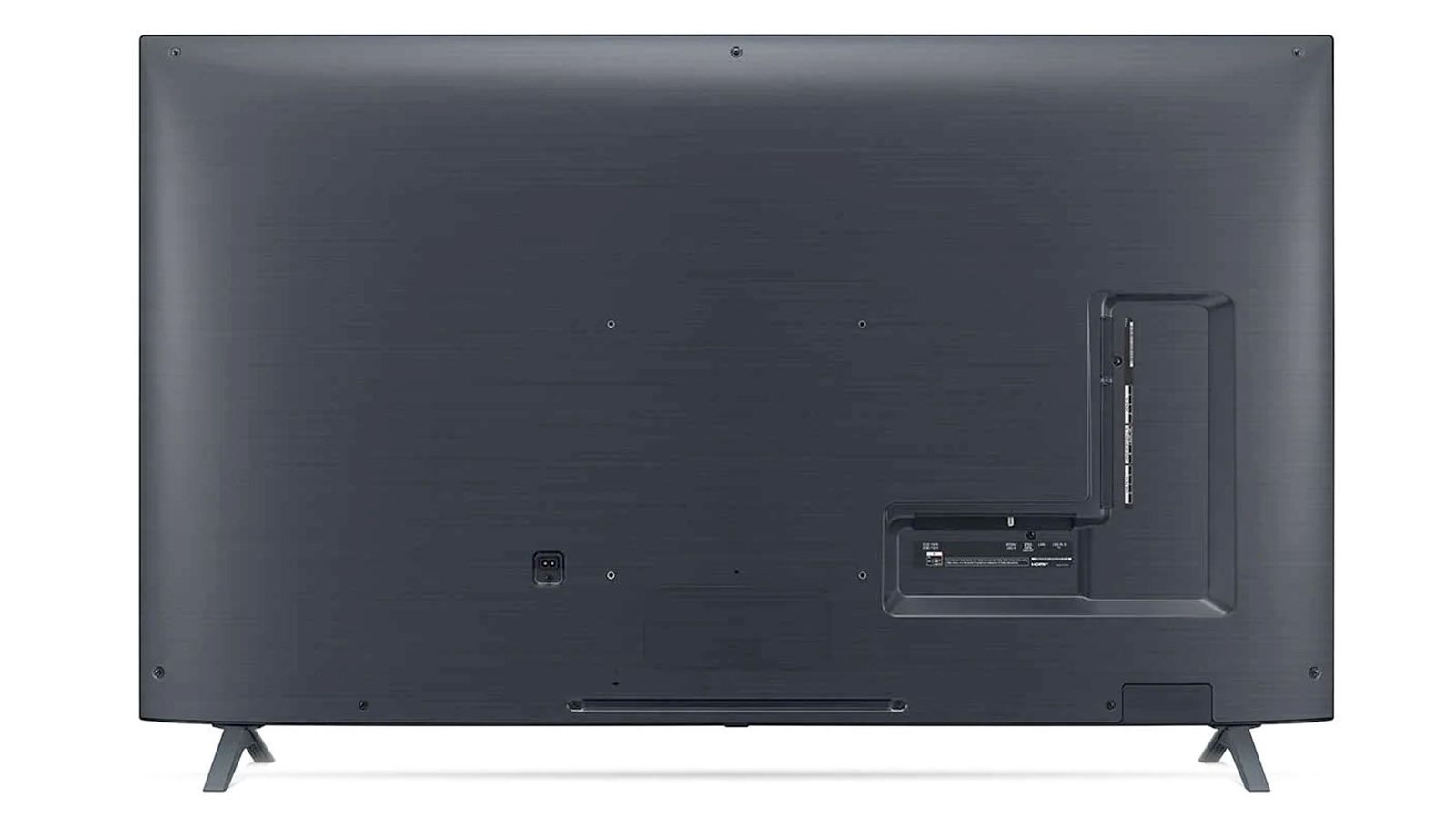LG has, quite justifiably, been enjoying the fruits of its OLED screen labours for a good few years now. It's been graciously receiving the plaudits, too. But at the same time it has struggled to make a compelling case for its accompanying LED TV ranges - it rather seems to have put all its eggs in the OLED basket.
Certainly this 65NANO906 NanoCell LED is considerably more affordable than LG's current headline-hogger: the 65GX OLED (which is over double the price). But given that 2019's very well-regarded LG OLED C9 can now be had for comfortably under two grand, how does the 65NANO906 hope to turn consumers' heads?
By piling on the features, that's how. This 65NANO906 makes LG's NanoCell LED tactic plain: offer wide-ranging functionality, some startlingly up-to-the-minute technologies, a whole lot of racy-sounding acronyms, and then try to make the TV at least a little less expensive than the attention-grabbing OLED equivalent. Which is all well and good in theory...
Our quick take
The LG 65NANO906 gets most things right and, in some respects, is surprisingly accomplished.
Its feature-count is impressive, and picture performance (some backlighting and black-tone travails aside) is very enjoyable. Which, when you take the price into account, is no more than it should be. It can't outsmart OLED in overall visual attributes.
If you're after a big screen for bright and low-lag gaming then the LG NANO90 is a dream.
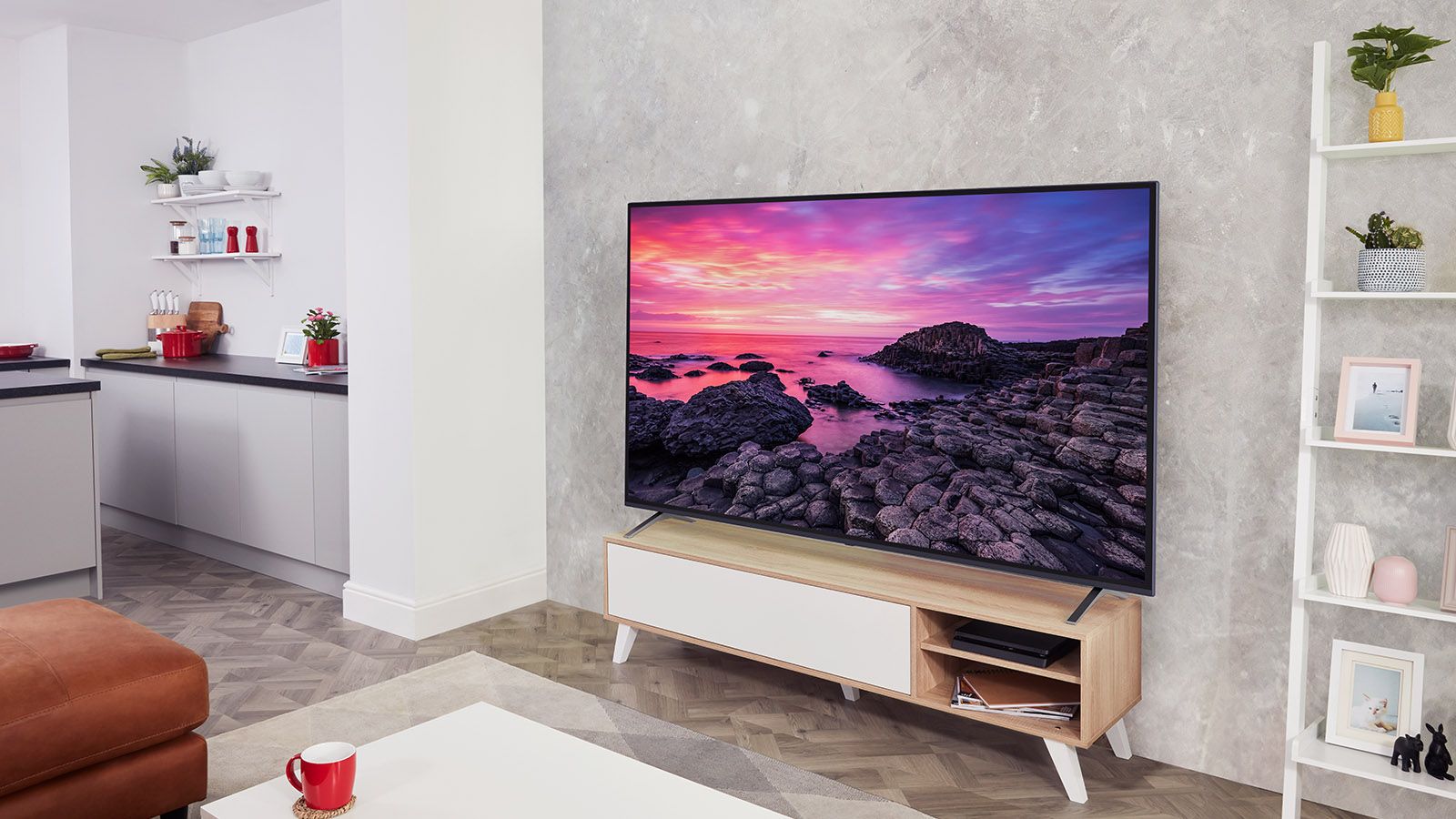
LG NANO90 4K NanoCell TV - 4.0 / 5
| FOR | AGAINST |
|---|---|
|
|
LG 65NANO90UNA
Design
- Dimensions (including feet): 1456mm (L) x 271mm (D) x 902mm (H)
- Connections: 4x HDMI, 3x USB, 1x digital optical, 1x 3.5mm jack
- Wi-Fi, Bluetooth 5.0 (BT Surround Ready), AirPlay 2
- Weight (65in): 24kgs
The 65NANO906NA is an unremarkable looker - which is exactly how it should be. The bezel around the 65-inch screen - that's our review size, 55-inch and 75-inch models are also available - is gratifyingly slim, nicely curvy at the corners and coloured a very discreet sort of gunmetal grey.
At a touch over 70mm deep (it's, 270mm if you incluse the feet protrusions front and rear) the screen is giving away a lot of showroom appeal to the supermodel-skinny OLED alternatives, but the chassis is, at least, nicely curved and has a substantial cutaway for its extensive selection of inputs and outputs. The word 'plasticky' is never far from the front of your mind when considering the 65NANO906, though.
The screen stands on two simple 'V'-shaped feet positioned out at either end of the frame. This is undoubtedly an improvement on the crescent-shaped stand that 2019's NanoCell LED TVs stood (and often wobbled alarmingly) upon - but the distance between the feet (1222mm if you've got your tapemeasure out) does seem to make wall-mounting more of a necessity than an option. At over 24kg, though, the 65NANO906NA will need a proper wall to hang on - a plasterboard partition won't do.
Inputs run to four HDMI 2.1 ports with HDCP 2.2 compatibility - necessary for the secure handshake to channel 4K content. One has eARC functionality - which you can read all about here - and two feature 4K at 120Hz compatibility.
Of course, whether or not this is 'true' HDMI 2.1, when 2.1 by rights should include 8K compatibility, is debatable - but what's not up for question is how welcome this specification is for gamers. The LG's HDMI inputs enable cutting-edge games console features like Variable Refresh Rate (VRR), Auto Low Latency Mode (ALLM), FreeSync, and HGiG HDR tone-mapping - which, when taken in conjunction with a claimed input lag time of less than 13ms (less still at 120Hz), looks to make the 65NANO906 a pretty impressive gamer's option. Even more so when the PlayStation 5 and Xbox Series X hit the shelves.
There are also three USB v2.0 inputs, an Ethernet socket (as well as dual-band Wi-Fi, of course), a CI card slot, and aerial posts for the integrated satellite and terrestrial tuners. There's Bluetooth 5.0 reception on board, and the TV is also Bluetooth Surround Ready - so just add a couple of (compatible) wireless speakers and instant surround-sound can be achieved. And iOS fundamentalists will be pleased to see AirPlay 2 compatibility too.
Features
- High dynamic range: HLG, HDR10, Dolby Vision, Dolby Vision IQ
- Full array direct LED backlighting
- Filmmaker Mode
Much of the 65NANO906's relative heft is quite easily explained away. This is a full array direct-lit screen, with its LEDs sitting behind the entire LCD screen - and they tend to be at their most effective when given just a little elbow room.
The 'NANO' part of the model name refers to LG's NanoCell technology, which uses - hey! - nano-particles to (theoretically) absorb unwanted colour wavelengths and leave the on-screen colours looking more natural and convincing than they otherwise would. And once the nano-particles have scrubbed up the TV's colour response, there are (of course) any number of viewing modes to be investigated and picture quality adjustments to be fiddled with in order to deliver satisfactory images. (As usual, though, most of the 'viewing mode' presets can be easily dismissed. 'Vivid', for instance, is simply the visual equivalent of being shouted at.)
But the LG also features one of the true televisual talking-points of CES 2020: Filmmaker Mode. It's designed to bypass all of the TV's clever processing algorithms and instead produce a picture that's as close to the filmmaker's creative intent as possible. In practice, though, it doesn't quite defeat every aspect of picture processing, and it's still possible for the user to make some adjustments.
As well as Filmmaker mode, the 65NANO906 has another soon-to-be essential feature - as well as HLG, HDR10 and Dolby Vision HDR protocols, the LG is among the very first TVs to feature Dolby Vision IQ. In basic terms, Dolby Vision IQ uses the LG's light sensor to adjust a Dolby Vision image to compensate for room brightness.
The whole show is run by LG's third-generation Alpha 7 processing engine. It mandates every aspect of picture performance and, while it doesn't quite have the fearsome processing power of the Alpha 9 processor fitted to LG's most expensive OLED TVs, it's nevertheless a rapid, high-performance affair with what seems like limitless headroom.
Interface
- Voice control
- LG Magic remote
- webOS operating system
- No UK catch-up TV apps (yet)
Given that its webOS platform has always been one of the slicker and more intuitive interfaces around, it's good to find LG hasn't fiddled with the winning formula too radically. It's still a big-print, easily navigated portal into all the very many services and facilities the 65NANO906 provides.
There's support for a huge number of online streaming services, for example. As well as the compulsory Netflix and Amazon Prime Video apps, there's Apple TV, Disney+ and every other reasonably high-profile service you can think of. And there's also a bewildering number of more obscure options grouped in a folder called 'LG Channels'.
What there isn't, at the moment at least, is any of the UK's catch-up TV apps - no iPlayer, no All4, etc. LG and Freeview couldn't come to any sort of arrangement in time for the launch of the company's 2020 models, though both have every intention of righting that wrong in time for 2021 - and, in the meantime, LG is working with the individual broadcasters to get their apps added to its 2020 ranges as soon as possible.
As well as an absolute stack of viewing options, webOS also allows you to control (and run quite involved routines for) any Internet of Things devices on the same network. Then there's on-screen music recognition in the Shazam style, which will identify the music accompanying whatever it is you're watching, and a slightly less compelling feature that will offer you retail opportunities (or, at least, pricing details) should anything on the screen take your fancy.
Navigation is achieved in a couple of ways. The 'Magic' remote is a usable, Bluetooth-powered point-and-click handset that makes entering an email address and the like way less arduous than when using a more conventional remote control (although it can't do anything to make the 65NANO906's set-up and adjustment menus any less labyrinthine).
Or there's the option of voice control - Google Assistant and Amazon Alexa are available via the big, central 'mic' button on the remote control - and the screen itself has a far-field mic which can be used in conjunction with LG's 'ThinQ' AI range.
Picture quality
Give the 65NANO906 the best chance, with a 4K HDR10 Blu-ray of Christopher Nolan's Dunkirk, and there's really no denying the quality of the pictures the LG serves up. Once it's set up to your satisfaction, of course.
On the downside, there's a short of authentic black detail, but contrasts are wide nevertheless, and the white tones are composed and enjoy subtle gradation of intensity. Detail levels - once you get up above the deepest blacks - are quite lavish, with the nuances of texture and tone given full expression. Colours are equally agreeable, with extensive tonal variation and convincing richness. And the film's many moments of on-screen movement, whether rapid or languid, are strongly gripped - edges remain composed and unflustered in even the most testing circumstances.
The LG's efforts with backlighting can very occasionally betray themselves - bright white areas of otherwise dark scenes can be a little ill-disciplined, with slight (but definite) backlight bloom visible. But by prevailing LCD/LED standards the 65NANO906 is a capable performer.
It's worth mentioning Filmmaker Mode at this point. Selected during the course of Dunkirk it initially seems to do little except rob the picture of quite a lot of its vivacity and sharpness - but persevere just a little longer, and the improvements in low-light detail and colour realism become apparent. It's a more naturalistic and 'cinematic' way to view a well-mastered film like this, certainly - as long as you can live with the relative lack of punch and the slight, but definite, softening of the picture.
It's similarly good news where a Netflix 4K stream of the sublime tragicomedy Sunderland 'Til I Die is concerned. You'll need to invest at least a little time getting motion just so, and striking a balance between punchily bright whites and backlighting sticking its oar in too obviously isn't a quick job, but once the parameters are set there's plenty to enjoy.
That 'vivid-yet-natural' colour palette, so difficult to convincingly achieve, is strongly in evidence - and the balance is nicely judged. There's plenty of detail lurking in the patterns and textures of a football match, and the LG does good work in paying them due attention - skin-tones, in particular, are believable.
Movement is composed in all but the most testing circumstances - sport is always a stern test of motion, and the 65NANO906 doesn't submit to image-doubling or jagged edges except in extremis. Throughout, picture noise is kept to a bare minimum.
There's a fair bit of dark-tone crushing going on, mind you - even though the LG can't always manage to generate truly deep black tones, and even though it does admirable work with detail in more colourful scenes, it nevertheless lets some of the finest details in darker scenes go astray. At least that's not the case with the brightest tones, though.
Stepping down in quality to a 1080p disc of The Godfather brings a predictable reduction in the previously impressive detail levels and an accompanying increase in picture noise. Movement remains pretty assured, though, and colours (blacks aside) continue to impress. This is a film with precious little in the way of truly bright whites - bold sepia is far more prevalent - but there's good dynamism in scenes with wide contrasts nevertheless. Edges remain acceptably smooth in almost all circumstances, and skin-tones remain convincing.
Anything less than 1080p content gets pretty short shrift from the LG, though. It isn't the worst upscaler of properly low-resolution material you ever saw, but it's certainly not the best - a bog-standard Channel 4 broadcast of Countdown manages to be soft and edgy at the same time. The colour palette takes a turn for the coarse, detail is bleached from the whitest tones, and picture noise becomes as integral a part of the image as the rest of the on-screen information.
Sound quality
- 2.0 driver arrangement with 20 watts of power
- Auto-calibration software coming soon
Sound is delivered by a pair of downward-firing full-range drivers, powered by a total of 20 watts. Despite an ability to process most audio codecs and being able to deal with Dolby Atmos soundtracks, an array and a power-rating like this isn't the most inspiring when juxtaposed with the size (and the quality) of the pictures the LG can deliver.
And yet the 65NANO906 contrives to sound considerably more dynamic and hefty, as well as direct and focused, than the bare facts of its specification might suggest is possible. By prevailing flatscreen standards it's quite distinct and controlled, giving the midrange (with its all-important dialogue) just enough of a nudge to make sure it stays towards the front of the stage.
The sound may yet improve, too. LG is working on an audio calibration system that will help the 65NANO906 tune itself to your specific listening environment. A firmware update in the future should appear.
LG 65NANO90UNA
To recap
Play to its strengths and this LED-backlit LG is an across-the-board impressive telly. It can't outsmart OLED in overall visual attributes, but it is super low-lag and ideal for gamers of now and into the future.

